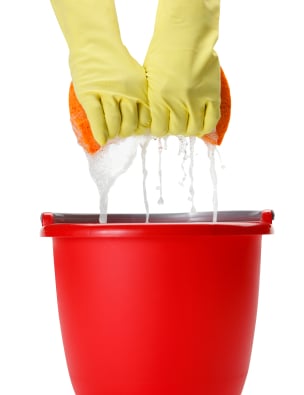How to Use Address Cleansing to Improve Patient Statement Delivery
July 27, 2012 •Brian Watson

 When it comes to patient statement processing, time is of the essence. That because any delay in getting your statements into patients’ hands is a potential drag on organizational profitability: reducing cash flow on hand and increasing Days in A/R.
When it comes to patient statement processing, time is of the essence. That because any delay in getting your statements into patients’ hands is a potential drag on organizational profitability: reducing cash flow on hand and increasing Days in A/R.
In the never-ending search to improve collection speed, one significant roadblock to patient statement delivery speed that often flies under the radar is return mail. No matter how patient friendly your statement design, or carefully-considered your copy, or fast and efficient your statement printing and mailing procedures, if a statement doesn’t actually get to a patient, then they have no way to take action on its payment cues.
To make matters worse, many care providers aren’t fully aware of what a substantial problem (and drag on revenue cycle performance) return mail truly is. Pitney Bowes, for example, estimates that insurance and healthcare providers alone account for 20% of all return mail (which adds up to a staggering 280 million documents per year). The result is slower collections, more bad-debt, and costly patient statement re-mailings that add to mail processing overhead.
Fortunately, there are a few simple steps you can take to ensure that your address data is standardized, scrubbed clean, and approved for delivery. To help minimize your return mail burden, your statement processing approach should:
1). Use NCOALink Address Cleansing to Pre-Qualify Send Data. While traditional Address Change Services do still have a place in an effective mailstream management program (see item five, for example), NCOALink has quickly become the go-to list cleansing tool for statement processing companies. In essence, it’s a proactive address change service, enabling mailers to verify a patient statement mail file against an up-to-date, computerized database (maintained by the USPS) that contains information for the over 40 million Americans that change their address each year.
It works like this: after your patient statement file goes through ZIP+4 code standardization, each record is compared against information contained in the NCOALink database. The resulting output is used to either confirm or improve your patients’ address data, providing current, standardized, pre-coded address information that helps reduce undeliverable and return mail, slash re-mailing costs, and speed patient statement delivery time.
2). Use CASS to Validate Address Deliverability. Coding Accuracy Support System (or CASS for the sake of readability) is an address list verification service offered by the USPS that aims to improve the quality and accuracy of the address, zip code and coded delivery information that appears on mail pieces. Mailing lists only receive CASS certification after a corresponding match is found in the USPS-maintained Address Matching System for each list record.
To make a long description short, CASS tools help to validate the deliverability of your patient statements, cleaning-up potentially problematic address information that may have been renamed or renumbered. And it also provides coding information that qualifies your mail project for discounted automated mail rates. In other words, it’s another pre-mailing check against the kind of defective statement delivery data that leads to higher mail costs and cumbersome delivery slowdowns.
3). Use AEC to Reduce Address Mistakes. AEC (Address Element Correction) is an address quality service that the USPS uses as a check against the CASS certified address matching process described in item two. When an equivalent record in the USPS’ Address Matching System isn’t found, statement processing companies can use AEC to transform problem data into correct, CASS-standardized addresses. That includes correcting mistakes in abbreviation, spelling, address entry, order and categorization. All of which ensures that statements are free from bounce-backs and eligible for automated mail discounts.
4). Use Intelligent Mail Barcode for Document Tracking. The latest in USPS mail tracking technology, Intelligent Mail Barcodes enable each mail piece to be tracked throughout the delivery process. By adding a unique, piece-specific, machine-readable barcode to each patient statement you send, Intelligent Mail Barcodes provide smarter statement processing operations: more oversight, better efficiency, and the closed-loop intelligence you need to identify (and respond to) weaknesses in mailstream management.
5). Use Address Change Services to Update Your Records. A post-mail service designed to help you better manage your internal patient records, ACS provides correct address information back to you when a patient statement is forwarded or returned as undeliverable. Recent upgrades allow corrected address information to be sent manually or electronically. However, because patient statement processing involves confidentially documents, undeliverable mail should be returned to your facilities to be destroyed. Although it doesn’t reduce return mail prior to statement printing and mailing (like steps one through four), ACS ensures that your records will be clean, organized and well-maintained. (And that future return mail snafus are eliminated altogether.)
Now that you’re in the know about what best-practice address cleansing techniques help reduce the costly burden of return mail, you’re well on your way to more efficient statement printing and mailing. And if you’re ready to discover more simple but productive statement processing tips, tricks and strategies, click here to download our free whitepaper The Five Habits of Highly Effective Statement Processing Solutions.
What strategies have you used to successfully fight back against the resource-draining problem of return mail?
Get Updates
Featured Articles
Categories
- Charity Care Management (1)
- Compliance (2)
- Customer Service (8)
- Digital Front Door (1)
- Direct Mail (6)
- eBilling (1)
- EBPP (34)
- ESL Statement (2)
- eStatement (1)
- Healthcare Channel Partner Billing (1)
- IVR (3)
- Mobile Payment (11)
- Online Billing and Payment (6)
- Online Patient Payment (17)
- Outsource Print Management (4)
- Paperless Billing (4)
- Patient Engagement (2)
- Patient Friendly Billing (21)
- Print and Mail (7)
- QR Codes (1)
- Quick Pay (7)
- Security (1)
- Self-Pay Patients (9)
- Self-Pay Revenue (4)
- Statement Design (32)
- Statement Print and Mail (1)
- Statement Printing and Mailing (28)
- Statement Processing (36)
- TransPromo (1)
- Up-Front Billing (1)

